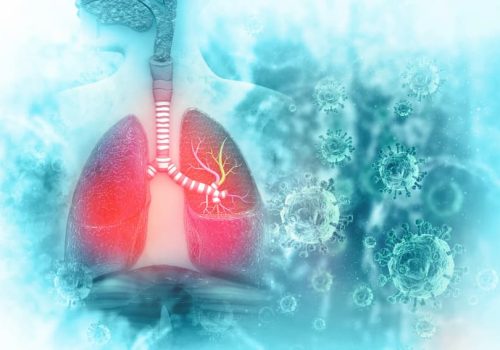Eli is an African-American boy who was born again at the age of 11. The vast majority of the 300,000 children born each year with sickle cell disease are not as lucky. But Eli’s case, like those of Helen, Diama, Revée and other patients before him, fills us with hope to fight one of the world’s most common genetic diseases with cellular treatment.
In this article we will learn about Eli’s story and delve into sickle cell disease to understand why stem cells can bring hope back to so many families.
Sickle cell disease, when hemoglobin changes your life
Sickle cell disease (also called sickle cell anemia or sickle cell disease) is a group of inherited disorders in two mutant hemoglobin genes (one from each parent).
When one parent has sickle cell disease and the other parent carries only one of the abnormal genes, such as hemoglobin S, their child has a 1 in 2 (50%) chance of having sickle cell disease.
When both parents carry a sickle cell gene, but are not sick, their child has a 1 in 4 (25%) chance of having sickle cell disease.
A person with sickle cell trait or carrier contains only one copy of the HbS gene and is generally considered healthy. In this case the greatest risk lies in the transfer of the sickle hemoglobin gene to offspring.
It is very likely that you are not a hematologist, so we remind you that hemoglobin is a protein rich in iron (which gives blood its characteristic red color), which transports oxygen from the lungs to the tissues and organs throughout the body. In addition, it carries to the lungs all thatCO2 that we do not need for anything and that these are responsible for expelling.
A key job that keeps us alive every second, and which is usually performed to perfection by about 250 million hemoglobin molecules in each erythrocyte (red blood cell). In fact, such a high concentration can influence the shape, deformability and viscosity of erythrocytes, characteristic of sickle cell disease.
Since each hemoglobin molecule carries four oxygen molecules, an erythrocyte can carry about one billion oxygen molecules. And if we consider that each person has between 4,500,000 and 5,500,000 erythrocytes per cubic millimeter of blood, there may not be enough zeros to indicate the number of oxygen molecules carried in the 4.5-6 liters of blood flowing through our body. Even if we calculate only the oxygen-rich blood.
In this context, the incidence of abnormal hemoglobin altered by genetic disorder is enormous:

- It causes the red blood cells, instead of being round and flexible, to become hard, stiff, sticky and C-shaped or sickle-shaped.
- Due to this deformation, when passing through small blood vessels they can clog and obstruct circulation, causing severe pain and other serious complications such as infections, acute chest syndrome and strokes.
- Sickled red blood cells are weaker and break down more easily (hemolysis). This decrease in red blood cells leads to anemia, which is manifested by fatigue, pallor and breathing difficulties.
- Yellowish pigment: When red blood cells weaken and break down, they release a yellow pigment called bilirubin. Bilirubin can accumulate in the skin and eyes, causing them to appear yellowish, as well as in other parts of the body.
- Frequent infections: Sickle cell disease also alters the immune system, so that severe infections can occur.
For all these reasons, it is essential to perform periodic red blood cell counts by means of blood tests.

Sickle cell disease, a global health problem
About 5% of the world’s population carries genes that cause hemoglobinopathies.
Of the 300,000 children born each year with major hemoglobinopathies, more than 200,000 are Africans with sickle cell disease.
It is estimated that 1 in 13 African Americans are carriers and 1 in 365 African American infants have the disease.
Why this incidence in Africa?
The sickle cell gene has become prevalent in Africa because the sickle cell trait confers some resistance to malaria during a critical phase of early childhood, thus favoring host survival and subsequent transmission of the abnormal hemoglobin gene.
However, it is not just a problem in Africa. It is also the most common inherited disease in the United States: 1 in 500 African-American babies born in the U.S. has sickle cell disease.
On the other hand, migration is changing the landscape of sickle cell disease: in the period 2010-2050, the number of children born with sickle cell disease is expected to grow by 30% worldwide.
In Colombia, sickle cell anemia affects 20,000 children annually. In 2019, 7,182 people were treated (70% in Bolivar, Valle del Cauca, Atlántico, Antioquia and Cesar) and the trend continues to rise.
Sickle cell anemia reduces life expectancy at approximately 40 years of age.
Eli and stem cells: goodbye, anemia. Hello, new life.
Eli was diagnosed with severe sickle cell disease. Due to low levels of red blood cells, he was easily sick and suffered severe pain crises when a blood vessel was blocked.
Often, his parents had to go to the hospital emergency room and sometimes he had to stay in the hospital for extended periods of time.
Eli’s day-to-day life was physically and emotionally draining for his family. But no one throws in the towel when it comes to a child.
His parents consulted with expert doctors at both Boston Children’s Hospital and Dana-Farber Cancer Institute to devise a treatment plan that could offer Eli a normal life. They knew that a stem cell transplant could cure Eli and that a sibling would be the best donor.
Finally, Eli’s parents welcomed his baby brother Gus and made sure to preserve his cord blood at birth. In addition to having cord blood, Gus was genetically compatible enough with Eli to also be a bone marrow donor.
However, along came the pandemic in 2020 and the delays were piling up. Eli was almost 10 years old. He didn’t receive his stem cell transplant until May 2021. Those were eternal months, especially hard. By conserving stem cells, the family decided to take advantage of all their options and move forward with a combined cord blood and bone marrow transplant from baby Gus.
One year after the stem cell transplant, Eli had normal blood counts and no signs of that diagnosis of sickle cell disease.
Eli has had no pain crises or hospital visits since his transplant.
100 diseases to say goodbye to with stem cell transplantation
Eli’s case is a reminder that there are about 100 blood-related blood-related diseases and hereditary disorders that can be treated with stem cells.
Research is essential to continue to expand this number of diseases.
But the closeness, sensitivity and understanding to try to put ourselves in the place of families like Eli’s, make us, at America Cell Bank, give our best.
That is why we offer the most rigorous protocols in the world, so that no matter how much time passes, hope is still there.
We invite you to get to know us.
Sources
https://parentsguidecordblood.org/es/enfermedades-tratadas
https://www.cdc.gov/ncbddd/spanish/sicklecell/facts.html
https://apps.who.int/gb/ebwha/pdf_files/WHA59/A59_9-sp.pdf
https://anemiafalciforme.es/home
https://www.tucuentasmucho.com/epidemiologia-y-pronostico-de-la-anemia-falciforme-en-ninos-y-adultos


















